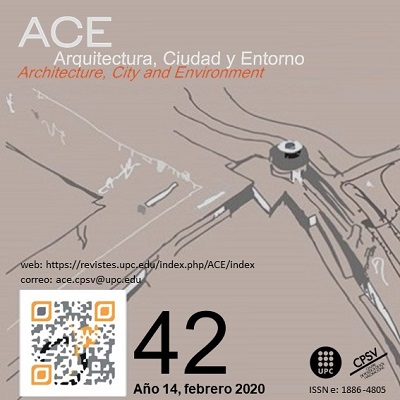Urban capital gain recovery simulation for Line 3 of the Santiago Metro
DOI:
https://doi.org/10.5821/ace.14.42.8963Keywords:
Public investment, inequality, Chile, urban economy, real estate profitabilityAbstract
This article corresponds to a simulation of capital gains recovery applied to the transactions of land and new departments for 40 cases located near the new line 3 of Metro de Santiago. In Chile, the recovery of capital gains does not exist as a public policy, although different actors have set up the debate to evaluate their implementation before various announcements about new metro lines in the Metropolitan Region of Santiago. The main reason for this article is to contribute to the debate with empirical data on the potential consequences of applying these instruments to subway lines, taking as a reference the models of recovery of surplus value in Colombia. With this simulation, the study tests Martim Smolka's proposals for recovery of capital gains in Latin American nations in order to improve the provision of fiscal funds and improve urban environments. In Chile, this exercise has not yet been carried out, although there are similar contributions that, from different approaches, value the results that arise from this study. The methodology is quantitative, exploratory and inductive in nature, using the profitability measurement by NPV based on a historical survey of the project, its values, the price of land and its typologies, to apply a 50% value capture to the profits of land and 30% of the departments. The findings show a good possibility of collection but that requires specific adjustments so that these instruments do not prevent the housing market from becoming insolvent.
Downloads
Published
Issue
Section
License
| INTELECTUAL PROTECTION CRITERIA |
At this moment, it is count with the "Oficina Española de Patentes y Marcas", while global protection it is being processed by the World Intelectual Property Organization (OMPI/WIPO). Nevertheless the International Standard Serial Number Office (ISSN) has given the following numbers ISSN: 1886-4805 (electronic version) and 1887-7052 (paper version). All articles will be peer reviewed, using double blind reviewing. |
| COPYRIGHT |
The article contents and their comments are authors exclusive liability, and do not reflect necessarily the journal editor commitee's opinion. All ACE published works are subject to the following licence CC BY-NC-ND 3.0 ES http://creativecommons.org/licenses/by-nc-nd/3.0/es/ It implies that authors do not hold nor retain the copyright without restrictions but only those included in the licence. |


































